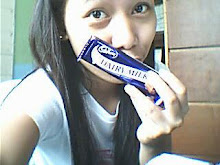Synthesis: July 9, 2009
Ms. Aguilar continued her presentation about extended definition where we identify terms and explain individual features when we believe readers need more than a sentence definition. She explained the methods of expansion which are explanation of use or function, description of parts,comparision and contrast, reason sequence and spatial sequence. She elaborated the two structures of comparison and contrast method: the block structure (topical) and point-by-point structure (complete subject). In block structure, one binding is discussed and then another while in point-by-point structure, points common to all items or topics are discussed. Moreover, she stated additional methods of expansion. These were chronological sequence, example sequence, effect-cause / cause-effect sequence, and problem-causes-solution sequence.
Next reporter was Ms. Valenzuela who discussed the first special technique in technical writing which is summarizing. Summarizing is the process of making the general idea brief. She enumerated and explained the elements of summary. These were essential message, nontechnical style, independent meaning, no added material, introduction-body-conclusion structure and conciseness. After that, she gave the guidelines for summarizing information: (1) read the whole text; (2) reread and underline the important key words and phrases; (3) edit data by omitting unnecessary words; (4) rewrite it in own words; (5) correct own version by crossing out unessential words and combine related ideas; (6) check own version; (7) rewrite the introduction, body and conclusion and include useful transitional devices; and (8) write sources.
Ms. Valbuena talked about outlining. She defined outline as a general plan of the material that is to be presented in a speech or a paper. It is also called “the essay at a glance”. It shows the order of the various topics, the relative importance of each and the relationship between the various parts. Then, she specified the methods of outlining: informal outlining, which contains simply phrases or words in random; and formal outlining, which is more detailed and systematic in arrangement of topics. She also gave the styles of outline which are Roman outline (combination of alphanumeric characters) and Decimal outline (numbers and subordinate numbers). The last part of her report was the types of outline: topic outline (brief phrase or single word outline) and sentence outline (sentence form outline).
The last reporter was Ms. Camba who emphasized definition. Definition is a process which uses analysis and explication to make the meaning of a term clear. She discussed the methods of definition: informal, formal, and expanded. Informal definition explains a term with a word or phrase that has same general meaning. We can have these ways or use these words in defining a term informally: or, parentheses, appositive, ‘that is..’, ‘e.g.’, dash (-),’…means…’, ‘is known as’. Formal definition is more detailed and rigidly structured. Its three principal parts are term or species, genus or class, and differentia. She provided the methods of expanded technical definition according to Reep (2003). These were cause and effect, classification, comparison and contrast, and etymology. Mrs.Manzano gave patterns in classification: (1) item / verb phrase / name of group; and (2) name of group / verb phrase / item. Then, she asked us to give appropriate verb phrases for each pattern. Next meeting, we will be expecting continuation of reports and several exercises. So, we should continue studying in advance.
Thursday, July 09, 2009
Subscribe to:
Post Comments (Atom)





No comments:
Post a Comment